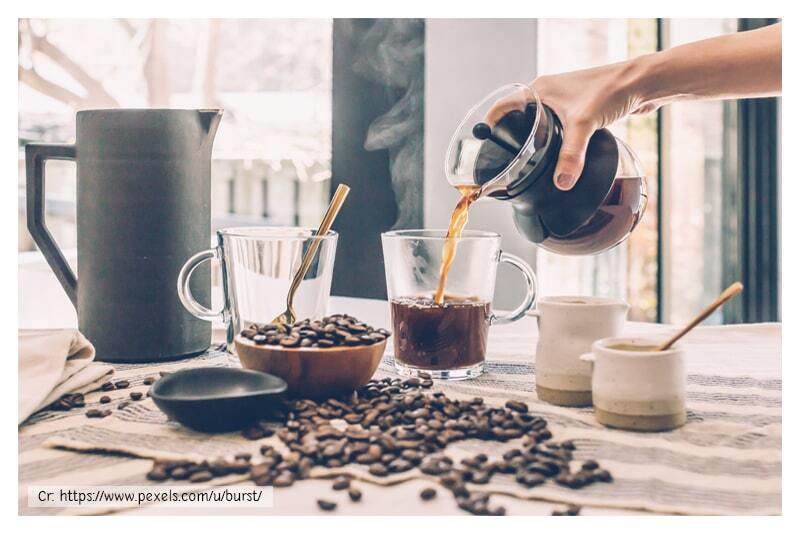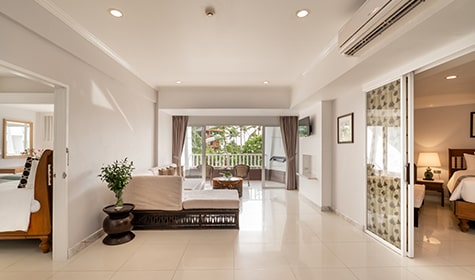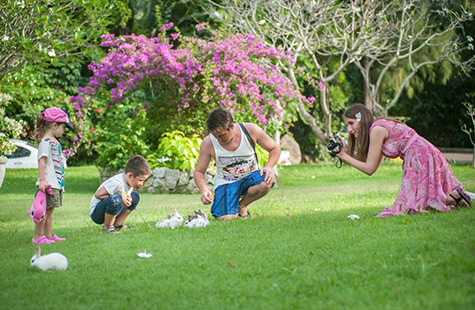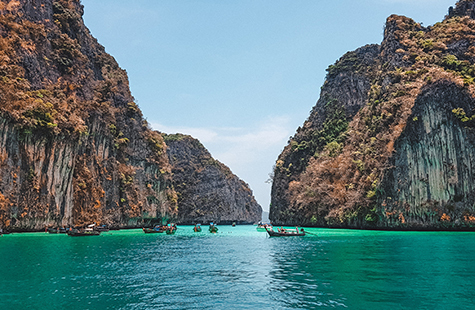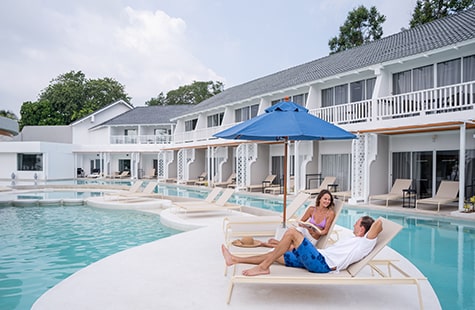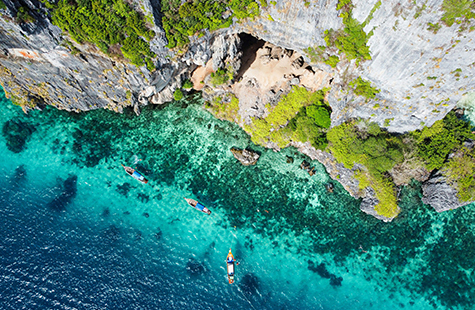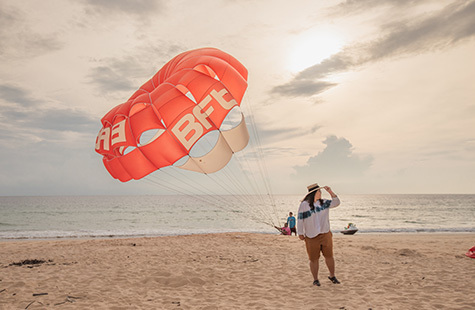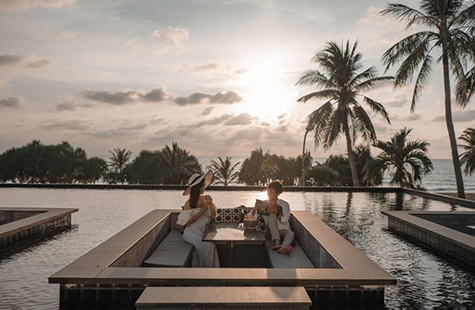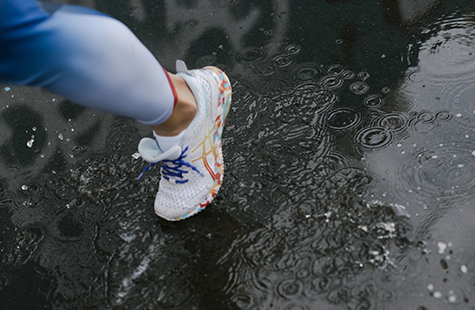Reasons why Siphon Coffee is better | Coffee Talk, Phuket
History and Trends of Siphon Coffee
You might have never heard of siphon coffee making because it is not a widely known coffee trend in Thailand. But for years, it is a phenomenal coffee trend in many other countries, like France, United States or Japan. The Siphon coffee trend is nothing new it’s actually a centuries-old brewing method that is just making a huge comeback.
The Siphon coffee brewing method was developed in the 1840s, when people believed that boiling coffee grounds killed much of coffee's rich flavors. The solution was to brew coffee with vapor pressure. Also known as a Vacuum Brewer, the Siphon coffee maker is done mostly by hand with precise skillful attention to temperature and timing.
How Siphon Coffee Brewing works?
How does the Siphon coffee brewer work ?
The Siphon coffee brewer contains two parts; the top container filled with coffee grounds and the bottom container filled by water. By heating the water container, vapor pressure forces the water to rise into the top container where it is mixed with the coffee grounds. Then at the right timing, the heat must be turned off, which will cause a loss in vapor pressure leading to water being dropped back down into the lower container but through a cloth filter. And there you go, the perfectly brewed siphon coffee await at the bottom of the Siphon coffee brewer's container.
So what exactly is so special about Siphon coffee ?
It produces the best vibrant coffee flavors that cannot be imitated by a drip brewer. You will also get a clean and bright cup with no traces of coffee grounds left in the bottom.
The coffee aroma is more intense. Siphon brewing method enhances the coffee aroma more than many other brewing methods.
Most importantly, it is actually unique and fun experience to watch this old process of brewing. Fascination comes when art and science intersects.
Coffee Talk Karon Beach, Phuket serves excellent Siphon Coffee
If you are in Phuket and cherish a cup of perfection. I recommended you to visit Coffee Talk Karon Beach, our coffee shop is located right in front of Karon Beach, so you can enjoy beautiful sea views while also enjoying this specific coffee taste and moving up your caffeinating to another level !
Coffee Talk serves a broad and creative collection of high-quality coffees, refreshing drinks, and snacks in a chilled-out atmosphere. Featuring a trendy interior style with sea view, our coffee shop has captured the fascination of both locals & tourists and have been reviewed and praised for great drinks. We are the perfect place to catch up on your emails at a beach destination and enjoy a nice snack
More Information:
10 Things about Caffeine that you probably don’t know
Most of us enjoy drinking coffee and claim to be a Coffee Addict. Anyone can drink coffee, but how to drink it efficiently is still a question to most of us. Here is some small tips on how caffeine affect our brain and how to get the most out of it, to use it to improve our performance.
- Light toast has more caffeine than a dark toast.
Dark toast coffee is roasted for longer than light roast coffee, and just like food that’s been burned, coffee beans that have been burned lose flavor and other qualities, like caffeine. - Caffeine kicks in after 15-20 minutes.
Caffeine will kicks in after 15-20 minutes and the effect of caffeine can last 8-10 hours but depending on the person. - 60 different plants have caffeine in them.
The well-know source of caffeine obviously are coffee beans, tea leaves and cocoa beans. But that’s not all there is up to 60 different plants that have contain caffeine in them such as kola nuts, yerba maté and guarana berries. - Decaf does not mean zero caffeine.
Decaf still has 8.6 mg to 13.9 mg of caffeine. A cups of regular coffee contains around 95-200 mg. - There is more caffeine in coffee than most energy drinks.
Brewed coffee contains 95-200 mg /240ml. for energy drink such as Redbull contains 76-80 mg/250ml.
- Different coffee have different amount of caffeine.
Starbucks have roughly 20.6 mg, Dunkin’s Donut have 12.7 mg and McDonald‘s 9.1 mg. - Drinking coffee helps boost your performance.
Drinking coffee helps boost your memory and cognitive performance, it makes you smarter by catalyzing dopamine and neropinephrine release. - Best time to drink coffee.
Our body have an internal timekeeper that dictates when you feel awake or asleep. Cortsol is the hormone that perks us up and it peaks 3 times during the day which means the best time for a coffee break is after a cortisol peak when we will feel sleepy. The best timing for drinking coffee is at 9AM-12PM and 2PM-5PM. - Coffee helps your workout.
Drinking coffee before workouts can burn 15% more calories and it also help preserve your muscle tissue. You brain on coffee releases Brain-Derived Neurotropic Factor which helps maintain your muscle. - Coffee helps fight illness.
From statistics, coffee drinkers have a 40% lower risk for liver cancer and 15% lower risk of colorectal cancer if they drink four or five cups per day. Its also reduces your risk of stroke by 20% as well as for depression.
Fun Facts about Green Tea consumption & history
At Coffee Talk we also serve great teas, so let's talk about it. Specifically, let us talk about Green Tea!
Green tea is made through processes of steaming and massaging in order to keep the condition of the tea leaf as fresh as possible.
Green Tea does not go through fermentation other types of teas. The lack of fermentation makes the tea water color green.
The story of Green Tea: When you think of Green Tea, you often think of it as a beverage of Japan. But really, green tea only came to Japan, when Japan came into contact with China. The story goes that a Japanese priest travelled to China to study Buddhism, and when he returned, he had brought back compressed tea leaves and seeds across the sea and back to his Japanese temple. One day, the Saga Japanese Emperor came to visit the temple, and the monks offered the beverage to the emperor, whom was very impressed. Green tea would soon be grown inside the palace fences and courtyards of Japanese nobleman. Not so long after, green tea became an integral part of Japanese culture.
Types of Green Tea
- Gyokuro is an expensive type of green tea that is grown under a shade. Avoiding the sun is supposed to maintain a lot of nutrients. As such, this type of tea grows slowly and is only harvested gradually. Gyokuro tea is often used in ceremonies. The taste is sweet and less. Gyokuro tea is often rolled beautifully when packaged.
- Matcha is produced from Tencha tea. Like the Gyokuro it is grown under a shade, but Matcha tea differs in that it is grinded with a stone to a powder state. The darker the color of Matcha, the more nutrient qualities it possesses. Due to its powdered state, 1 cup of consumed Matcha tea is equivalent to 10-15 consumed cups of other types of Matcha tea.
- Sencha, the green tea that most Japanese people drinks on a daily basis. Sencha grows in full sun. Like Gyokuro and Matcha, Sencha teas harvested during Ichibancha period of the year are of the highest grades.
- Bancha, the second quality tiered from Sencha tea as they are harvested during the later periods of the year, because this will harvest in the third period or the fourth period of the year. Bancha is less aromatic and more astringent, but it is popular due to their robust flavors. They are generally from larger tea leaves or those found near the stems.
- Houjicha, is a reddish brown colored tea roasted tea made from Bancha tea, Sencha tea or Kukicha tea. They are less bitter and has lower caffeine content. Houjicha tea smells sweet so it is suitable for children and consumption after dinner.
- Genmaicha is Japanese brown rice green tea. It is a mixture of green tea and Japanese roasted brown rice. In the old days, Genmaicha tea was considered the “the tea of every person”, because pure tea leaves were expensive. Combining with rice was a way to lower the price and be accessible to all classes of people.

 EN
EN 














